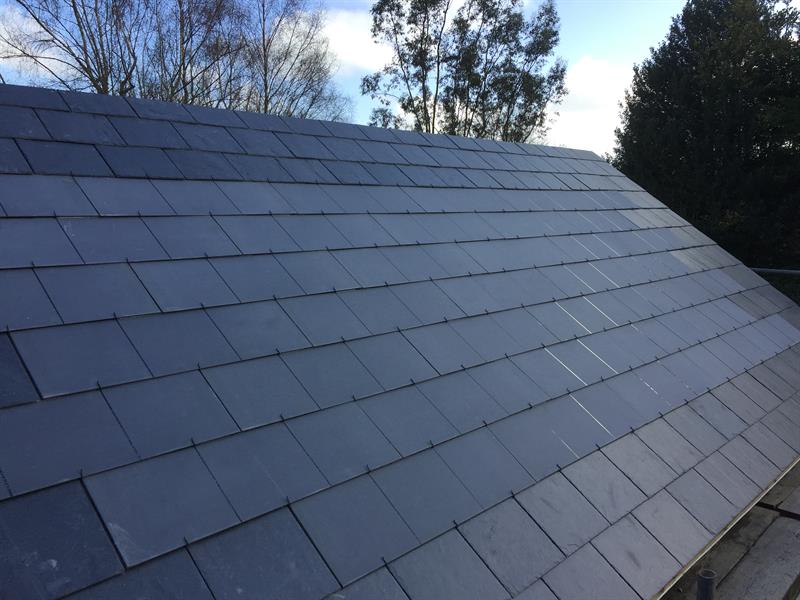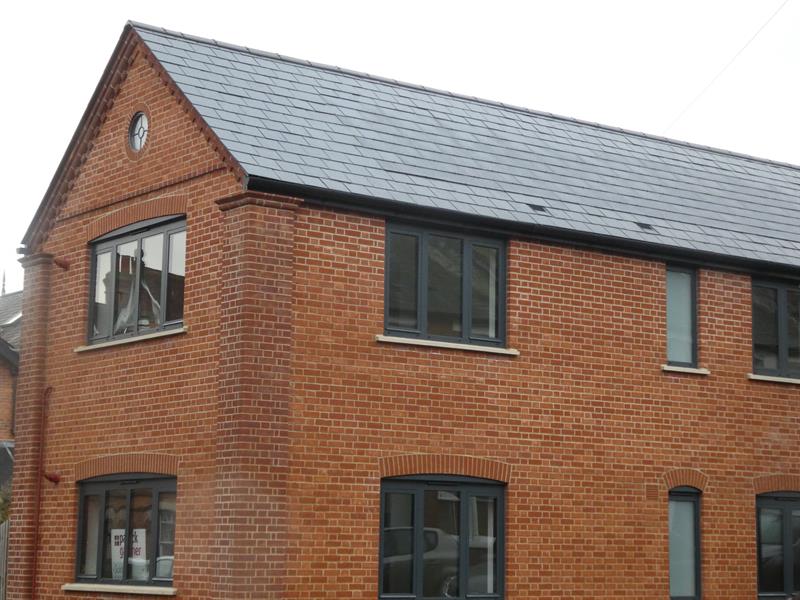BIPV: the next generation of solar PV?
BIPV: the next generation of solar PV?
Solar panels won’t win any beauty contests, but integrated systems can complement your home’s architecture while generating energy.
What is BIPV?
BIPV stands for Building Integrated Photovoltaics (BIPV) – new dual purpose construction materials. Thanks to advances in solar cell technology, PV components can now be incorporated into glazing, rooftops and facades. BIPV works just like solar panels (photovoltaic cells converting sunlight into electricity) but it is designed to be part of the structural fabric rather than add-ons. It has a dual role as a material in the building envelope that also generates energy.

Image supplied by GB Sol.
In London, Heron Tower is one of the first skyscrapers to integrate PV into its glazed façade. Other built examples include Kings Cross Railway Station, which had silicon solar cells incorporated into overhead glazing in the barrel-vaulted roofing.
BIPV can be incorporated into the construction of new buildings or retrofitted.
How can it be used in building envelope?
The main types of BIPV include:
- Solar tiles, shingles and slates – combine to create a photovoltaic roof system that provides shelter and generate electricity.
- Lightweight ‘peel and stick’ flexible PV membrane can in theory be applied to almost any surface, including glazing, so even windows become energy generators. The membrane can also be applied to curved surfaces.
- PV glass – photovoltaic cells sandwiched between two sheets of safety glass. Can be installed in curtain walls, facades, roofs, louvres, canopies, solar sunshades and more.
- Crystalline silicone (c-Si) panels are available in various shapes, sizes, colours, transparencies and patterns to blend seamlessly into a building structure
When PV production is at its best in the summer, most of the useful light comes from above, so rooftop installations are likely to be more efficient than vertical surfaces or walls.
What is new about BIPV?
The biggest advantage of BIPV is improved aesthetics which in turn could accelerate take-up of solar PV. Large, roof-mounted solar panels are regarded by some as a bit of an eyesore. The blue and silver-veined panels typically stand out whereas BIPV products are designed to blend into buildings.
For example, GB-Sol manufactures PV slates to integrate seamlessly with natural blue-grey slates. Manufactured in Wales, the solar slates have been installed in hundreds of homes around the UK. Designed to resemble a slate roof, the solar slates are popular with local planning authorities and can help homeowners gain planning permission in conservation areas, national parks, areas of outstanding natural beauty and other restricted areas, says the company.
As the GB-Sol energy-generating slates are accredited under the Microgeneration Certification Scheme (MCS), installations qualify for SEG (Smart Export Guarantee) payments. This means homeowners can sell any unused renewable energy generated to electricity suppliers, though the rates paid are low.

Image supplied by GB Sol.
Why hasn’t the technology taken off yet?
The technology has been around for about a decade, but the industry is still in its infancy. Many companies in the first wave of commercialisation failed largely due to lack of cost competitiveness compared with traditional solar panels. There are currently only a handful of suppliers in the UK. But the global market for BIPV, estimated at $10.3billion in 2020 is projected to reach $20billion by 2025. Factors driving growth include declining cost per watt, enhanced aesthetics of BIPV, improved efficiency and desire among building owners to go green, say financial analysts.
BIPV has been criticised for low efficiency – how much sunlight they convert into electricity. For example, the Heron Tower BIPV façade only contributes 3.5% of the building’s total energy consumption. Meanwhile efficiency per square metre of solar slates is about 80-85% of what you would expect from full-sized solar panels, depending on the model chosen, said a spokesman for GB-Sol Ltd.
What does it cost?
BIPV has historically been expensive. GB Solar quotes a price of £57.50 for a standard 500x250 PV slate unit – prices correct March 2022. That gives PV slate an overall roof kit price of £284/sqm or £8,395 for a standard 4kW system – prices correct March 2022. These prices do not include installation, delivery or VAT. But the PV slates can be installed by roofers at a similar speed and cost as the natural slates they replace, says GB-Sol.
By comparison, a 4kW solar panel system typically costs between £6,000 and £8,000. Neither option is cheap though solar tiles will probably burn a bigger hole in your pocket. That said, you may think it’s a price worth paying for solar technology harmonising with the architecture of your home.
Other advantages of BIPV over solar panels, say suppliers, is that initial cost can be offset by reducing the amount spent on building materials and labour that would normally be used to construct the part of the building that the BIPV products replace.
Is BIPV right for my project?
BIPV is a more sleek and subtle solution than solar PV panels. It’s an aesthetically pleasing option which is likely to become increasingly affordable and efficient in future. At present, BIPV is mostly used for flagship facades or rooftops on large commercial or public buildings with big budgets. In the housing sector, it tends to be limited to a few roof tile products. But in future the technology will be widespread and an ordinary part of the building process, believes the National Solar Centre. It’s just a question of when, says the research body.
